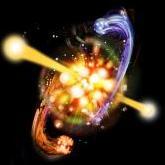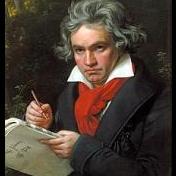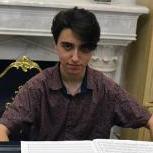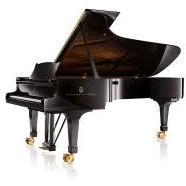-
Posts
450 -
Joined
-
Last visited
-
Days Won
6
Morgri last won the day on June 13 2021
Morgri had the most liked content!
About Morgri

- Birthday 02/03/1870
Profile Information
-
Gender
Male
-
Location
Texas
-
Occupation
Student
-
Interests
Composing, Movies, Friends...
Recent Profile Visitors
7,625 profile views
Morgri's Achievements
-
Each landscape is a representation of my experience and thoughts of different locations I visited in Japan during the spring of 2017. I. The Souls of Adashino Nenbutsu-ji This temple, founded in 811, sits in an area where people have historically abandoned the bodies of the dead, exposing them to the elements. Now some 8,000 statuettes, which were scattered around Adashino and collected in 1903, memorialize the souls of the dead. The movement contains strong representations of time and death, yet remains hopeful that the souls abadoned have found peace. II. The Markets at Zenko-ji Temple Less focused on the history of the temple, the movement highlights the vibrancy of the people and markets that lead up to the temple. Especially on festivals and weekends, people busily swamp the temple, many wearing traditional japanese items, shop for trinkets whilst having a good time with friends and family. III. The Torri of Fushimi Inari Althought technically the shinto god of rice, merchants and manufacturers of Japan traditionally view him as the patron of business. Since being built in 1499, the main shrine has amased nearly 10,000 torri (the orange gates) on its main path. While traveling the path, one becomes transfixed with a sense of weight and reverance, as the path contains several smaller shrines spanning the 2.5 miles trail. It is a custom to donate to the temple in order to see a wish to come true, or to thank for a wish that has become true. IV. The Rakan at Otagi Nenbutsu-ji There are nearly 1,200 Rakan Statues at Otagi Nenbutsu-ji. The statuettes, usually humorous in nature represent the disciples of Buddha. In writing this movement, I tried to channel the whimsical and mischievous nature conveyed in the statutes. Therefore, despite the movement starting with some gravity (representing the serious discipline it takes to create these rakan), the movement quickly dissolves to quarky and disjunct motives. There are some mistakes in performance, as usual, so here is a score to follow. Hopefully you can gage my full intentions. Perhaps I'll get a better performance one day... Edit: Here are some electronic versions if you want to hear without mistakes (but mechanical haha) 1. https://app.box.com/s/ct8kdx1brsfnn3dk6crpjp48pv2brtm5 2. https://app.box.com/s/k9tve99nc2gysulzrgytbvc9d3nbdqjf 3. https://app.box.com/s/22autvd43byzk58udn2xns9i0ucs1ni4 4. https://app.box.com/s/f16l1sgee9aea0s0yhkz1xmkqh5tapdh
-
Although your experience is quite common, as a person who ran a music festival for over 7 years, I can tell you that the demand is there. I was astounded by the amount of "normies" who wanted to come to my concerts. In fact, I can't tell you how many people came up to me after concerts telling me that they never thought the would enjoy this type of music as much as they did. Of course, it helped that I set expectations for the music, I would often give talks before the show managing expectations and giving them ideas of what to listen for in certain pieces. I would explain that some would be pretty nice, others would be weird, and some pieces they probably wouldn't like (but that they should listen to certain features of these pieces). This really focused their attention and brought several people back to multiple concerts. The issue of the topic is not the demand of concerts nor the attendance of normies, but rather, that the community that champions this music and wants to have their pieces performed, doesn't champion that music at all. I will provide another example. When completing my doctoral degree at the Cincinnati College Conservatory (a huge school of music with at least 40 composers) our professors lamented that composers were not going to their piers recitals. Now, you may say believe that it was because they were busy with classes and such, but that's not the case. When the school mandated the attendance of composers to go to their piers concerts, suddenly attendance sky-rocketed -- even though there was no credit offered for the class. Now, why is this? Why did it take mandating students to attend their piers concerts to make it happen. One would think that these composers would support their piers and the new music community by going to these concerts -- even if they didn't really want to go! My point is that, composers lament the fact that nobody goes to concerts (whether it be normies or anybody in general), but when it gets down to business and opportunities come up to attend and support concerts they say don't exist, they don't go! This shouldn't come down to "ah, well it's because I don't enjoy the music at these concerts." There should be an obligation to support these efforts, especially when the composer complains that opportunities and events as such never happen.
-
Let's be honest, the music community has a big problem, it lacks major support. Concert halls don't want to play music by contemporary composers because they don't sale tickets. In fact, I posit that the only reason they do, on occasion, hold a contemporary music festival or perform a contemporary piece is so that the said organization can say they are doing their part to "keep music going into the next century" something or another. Even worse, though, is that the contemporary music community, composers and performers (theorists and historians are sort of in a different category in my mind) don't help with the problem. An example: Composers talk a big game about supporting the community, but it's all inherently selfish support. It's rare for a composer to actually get out there and support the community. I'll give two examples. When I created the Applause New Music Festival, I made it about as accessible as possible for people to attend. All of the concerts were free, where in convenient areas of town (easy to find churches, theater buildings, colleges, and contemporary art museums), and most importantly surrounded by at least five, FIVE! colleges that had robust music programs -- Texas Cristian University, U. of North Texas (a very well known college for composers and performers), Southern Methodist Univ. among others, all of these colleges were within 45 minutes of the performances hall at a given time. These concerts were made fully to support the new music scene. All the music was by living composers, many works even commissioned! All works were dated no older than 15 years and performers were all up and coming/highly professional groups and/or soloists dedicated to performing new music (Unheard of//Ensemble, Gregory Oakes, Vive! Ensemble, John Solomons, etc). These were serious concerts outside of the academic context that is what the new music world talks about all the time needing to happen! Or so I thought... I can only recall one time when musicians from these schools attended a concert and that was when one of performers I invited to perform new works (a great clarinetist by the name of Gregory Oakes -- look him up, he is fantastic) happen to do a masterclass at one of the Universities. Three clarinetists came to hear him perform. Otherwise, NOT ONE TIME did a composer or performer come to the concert, unless his/her piece was being performed of course. Concert attendance ranged between 5 - 40 people. Okay, you may say, 40 people! that's huge for a new music concert! But this one made mostly of family members and church friends doing me a favor and supporting, not musicians. Actually, it was quite sad that more church members and family members attended a free concert that was meant to push meant to do exactly what composers and performers always b*tch and moan about what's wrong with the music scene. These people didn't come to listen to Bach or Beethoven and they knew it was going to weird or different, but they actually came and opened their ears to give it a chance. You know who didn't come? The music community. Now tell me this, if composers and performers won't even show up to new music concerts, why do we expect people who don't typically listen to new music to show up. Audiences notice who is there and who isn't. It's quite telling to them when they come to a new music concert and don't see any musicians or composers in attendance. I mean, if musicians don't even want to go -- why would anyone else wanna come for that matter? How can this be fixed?
-

Ballade in E-flat minor, Op. 14
Morgri replied to Theodore Servin's topic in Piano Music, Solo Keyboard
The piece is quite beautiful. The romantic/somewhat impressionistic style creates a beautiful atmosphere for you to develop your melodies. I agree with Pierre regarding re: ballad, it sounds like a wonderful fantasy. 1. The opening is quite striking, in terms of ballad, slow and melancholic. I really enjoy the harmony -- and rhythm -- to this opening. It also lets me know that I'm in for piece of considerable length. 2. The build up around 3 to 4 mins is quite exciting and really leads quite nicely to that cadence at 3:50. Wonderful writing there. 3. Really enjoy the interplay in voices at 5:00 to 5:20ish. It quite clearly takes on a romantic flavor over impressionistic, reminiscent of some of Rachmaninov's brilliant writing. I almost think this could be a really cool first movement to a piano concerto (it's already a great stand alone piece). 4. I almost wish you do a straight repeat or slight variation on the opening to end this piece. The opening is just that strong, nonetheless, bravo, an exceedingly good piano work that I would bet lots of pianist would be interested in playing. -
What an energetic little "musical moment!" Here are some thoughts. 1. There is a sense of "perpetuum mobile" to this piece that bothers me just a little bit, and that is, that I just feel like there is not a moment for me to really get a break to reflect on each phrase. May a short (eight note) rest or note would be enough to do this. I'm not saying what you have in bad by any means, and my thought is very subjective, but I will say that there is just no place at all in the piece to really reflect at all, it just goes and goes. 2. At measure 8, I think the scalar motion going upward really takes away the cadential moment at measure 7. I think it would serve you well to just have a definitive cadence there and then start with stuff at measure 9. 3. That section at 9 forward is really quite beautiful and well thought out. I very much like how the momentum is continuous there. Great job. 4. The development is fantastic, good job using the material you have. 6. Measure 48 strikes me as the same as what I said on point 2. I actually think 49 and 50 is a great ending, but is there some other way you can arrive to that then the arpeggio going upward to it? I don't know, just wondering.
-
Best work on the site by far.
-
this sounds more like trailer music than a boss theme. I agree with Rabbival on some points 1. It is short and needs to be much longer (maybe 3 or even 4 minutes) 2. Repetition is not necessarily a bad thing (see the boss fight themes from Yasunori Mitsuda in Xenosaga). That being said, it needs to go in a direction that keeps it interesting. one thing to note about Mitsuda's boss fight theme is that it doesn't build up for several minutes, it's very intentional for when it gets loud and builds and delays it enough to where the loop doesn't become a "not again moment." 3. Related to number 2, I don't know if the bass line needs to be louder and stronger, at least for a boss fight, but for a piece like this that sounds more like a cutscene or trailer, I think Rabbival is right on it.
-
It's pretty cool you did this in Csound. These programs have always been more difficult for me to get into, so bravo for getting into it. Each time a note plays there seems to be a pretty sizeable clip, is that something you can smooth away a bit or something?
-
I'll tell you what, I really want those first 15 measures to senza vibrato. I think that would make the opening really powerful and ready to move into brief middle section. I would really consider exploring tempo and rhythm a bit more. I know you vary it up a bit in the middle section, but it really starts to drag a little bit and doesn't feel like it's moving anywhere. This becomes particularly obvious when you move back into the opening material to end. I think you have a strong idea, just needs a little more work.
- 3 replies
-
- violin
- string quartet
-
(and 4 more)
Tagged with:
-
I enjoyed this piece. I find the "form" of it interesting. Obviously there is the first section that sets up the mood and ideas of the piece (the bells, as you say) but then flows into this quasi-improvisatory form that mixes a variety of styles. I say variety of styles but maybe most like a debussy-esque, impressionistic, dream state. Which, by the way makes perfect sense for the title and program notes for the piece. I think you do well to call back the beginning of the piece, if not just for a brief moment, to connect the piece as a whole. I really think it brings it together at the end into a single cohesive entity, especially given the almost improvisatory nature of the music after the opening. Really enjoyed it.
-
I think last time I reviewed a piece of yours, I said it was to short and too many ideas. Well, I think you got it right on this one. Obviously this track is meant as incidental music would work as an emotional track in any film. As always, enjoy your work, just wish you would notate it, haha.
-

classical I've composed a brief sketch of a mazurka.
Morgri replied to DoYourDailyDuo's topic in Piano Music, Solo Keyboard
Wow, here since I don't know, 2009 or so, and I've never seen anything like this. -
I mean, come on Quinn, this piece should be way longer, and you know this ;). The piece is delightful to be honest, it's not too serious but still high quality. I just want more, like 3 or more movements, and that's saying something, cause I usually hate listening to the trumpet.
-
SSC, you always outdo yourself. Graphic scores now? I love that you are exploring that new space (at least from the few pieces I've been able to see from you). During my Masters program I was pushed to write a lot of this time of stuff, and I always enjoyed it. But take note, it is not easy to do right. I like the "In C" type ideas in the pulse sections, and the faster passages that you get from those (at points) really help to break up the monotony of the sustained slower portions of the work. Pulso 3 is interesting, especially having that "libre" part. I'm curious as to how you coached the players on how to interpret the passages. In any case, great job, I rarely get to see pieces like this in this forum. So a breath of fresh air.
-
It starts about 11-17 seconds in. You can skip up to that part and it should work.



.thumb.png.8b5b433a341551e913a34392660bc95b.png)



.thumb.jpg.c0a72d70ca19ec34c5702ec7e7951f37.jpg)



